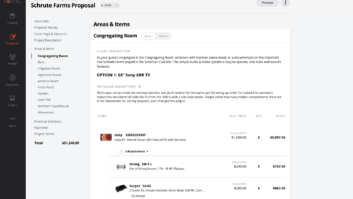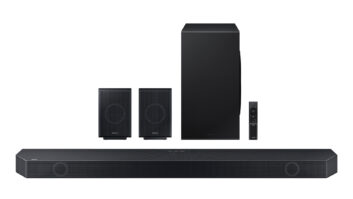Each year the Internet grows to offer more services to improve the way we live, work, play, and learn. As the worlds content moves rapidly toward an IP-based infrastructure, the information we want to access will come to us via a computer browser.
In our residential custom electronics world we now have IP-based video cameras, receivers, storage drives, whole-house audio systems, security panels, light switches, controllers, thermostats, sprinkler systems, and even pianos (in addition to the ubiquitous broadband router and wireless access points).
For the client and us, the challenge of having all of these IP devices in the home is two-fold: first, we have to remember the IP address for all of the devices, and we also have to remember the passwords to access the products. If we were only using one computer to access the devices, we could easily save them and their passwords on our browser. In reality, however, we often want to access these devices from many different computers in or away from the home.
One of the best methods that I have found to organize the growing number of home IP devices that we want to control is to create a personalized home page that has defined links to all of the homes controllable IP products. Google (among other web sites) has recently started a free service that allows you to easily set up your own login and password-protected personalized web page on which you can place all of your commonly used IP home control links.
In the past, our company had to create and then publish a personalized portal to an Internet service provider to accomplish this task. Now Google lets you create this custom portal live and in an interactive fashion within the browser window. You can even drag and drop elements within the portal window to create your own look and feel for the page. This portal allows you to easily access your homes IP devices from any browser in the world.
Lets say you want to access the four IP cameras that you have around your home from an airport Internet station in Paris. You log into Google, and sign on to your personalized page where youll find your camera link. You click on it and it brings you to your home camera pagebut first there is a login and password to complete before you can finally see your home cameras video images. If you cannot remember this information you will not see your camera images. Had that been the only login and password we needed to remember that would probably not be an issue. But we still have a number of other devices that may have a different login and password to access them. Memorizing all of this information becomes more of a challenge as our deployment of IP home devices increases.
I have been experimenting with a number of login and password database packages to solve this problem. The one that I found with the easiest user interface is SecureSafe Pro ($32) from Mar Software. It allows you to enter and organize your entire login and password information by category along with the name of the corresponding password-protected IP site. For example, we have login and password categories not only for our home IP devices, but also for all of our financial services sites, calendaring sites, e-mail portals, and other subscription-based service sites. Its great to keep all of that information in one central database instead of on sticky notes all around the desk.
The final challenge is ensuring that our password database only resides on our home computer and not the Parisian kiosk. SecureSafe allows you to save your database in HTML format, where it can then be uploaded to your ISPs FTP server. Now you can create a passwords link on your personalized Google browser that points the database you just uploaded to your ISP. This allows you to view your login and passwords for all of your sites from any browser in the world. If youre concerned about having this confidential information on a server outside of your home, then you can add login and password protection to the subdirectory where you published this password informationcreating two layers of protection before you can get to the information.
With these two simple tools, developing a personalized portal complete with an online database of logins and passwords, you can dramatically improve the way that you and your clients manage and control homes that are becoming more and more IP enabled.
Our professional channel is in business to offer customized electronic solutions and now we can add personalized portals to our list of customized offerings to grow not only our business services, but our industrys reputation as a leader in innovative electronic solutions for the home.
Gordon van Zuiden ([email protected]) is president of cyberManor, in Los Gatos, California.







